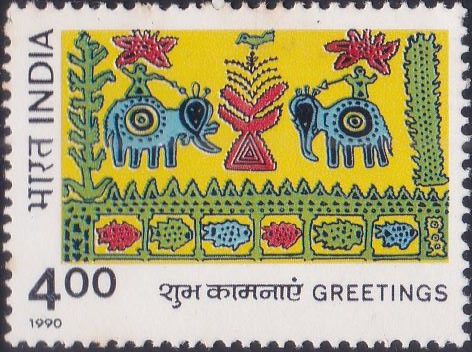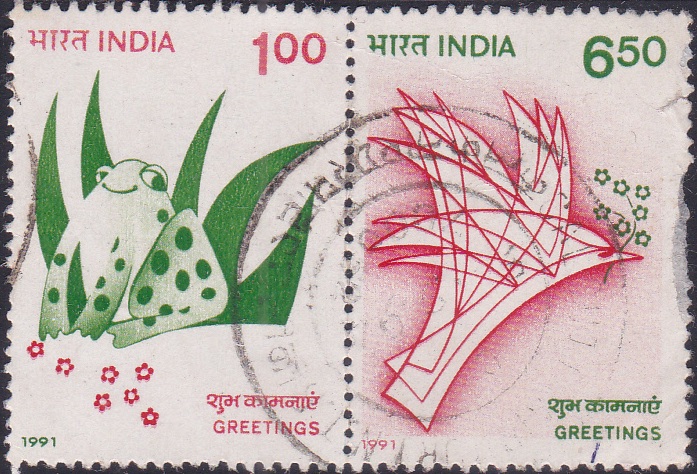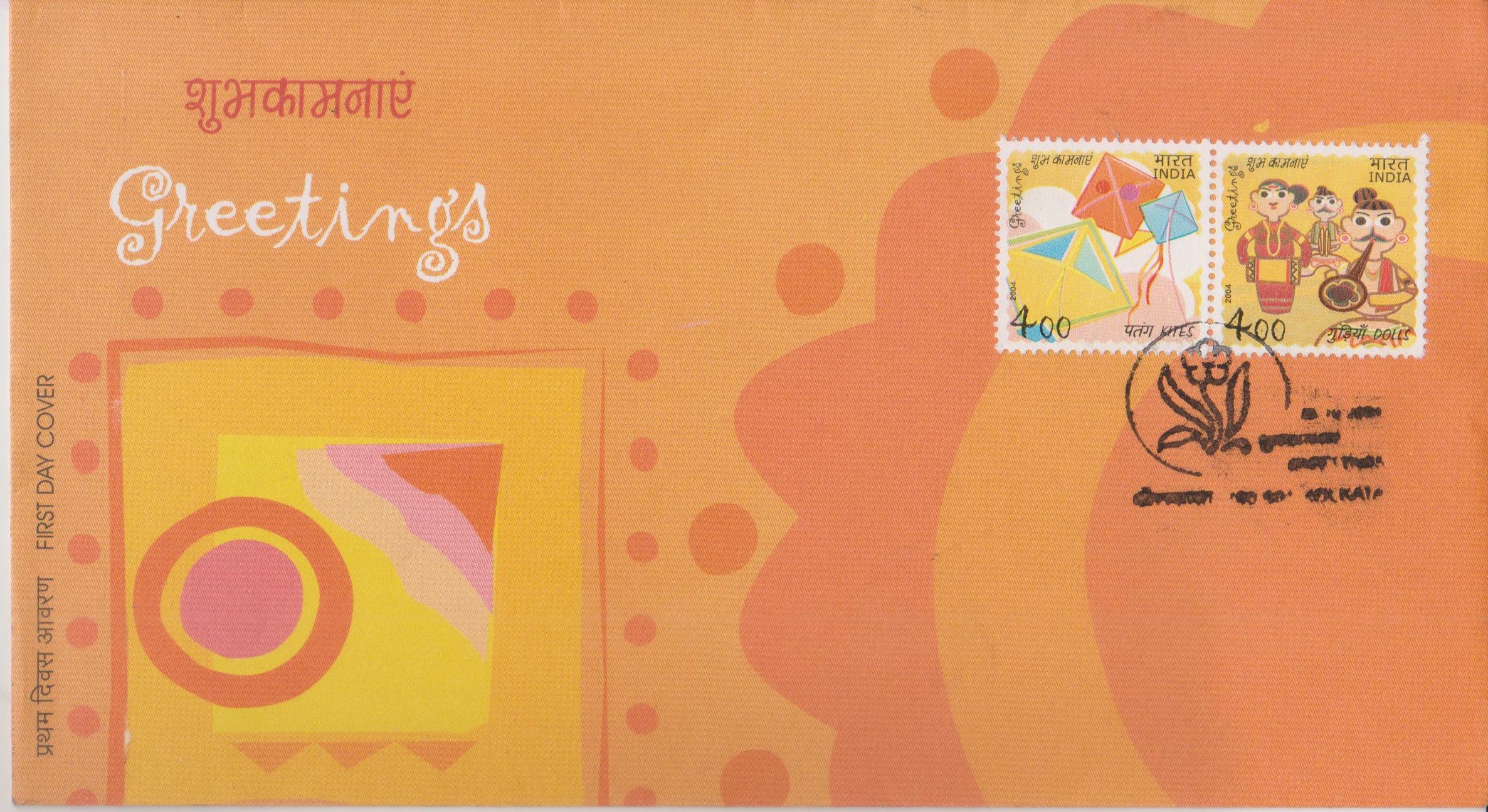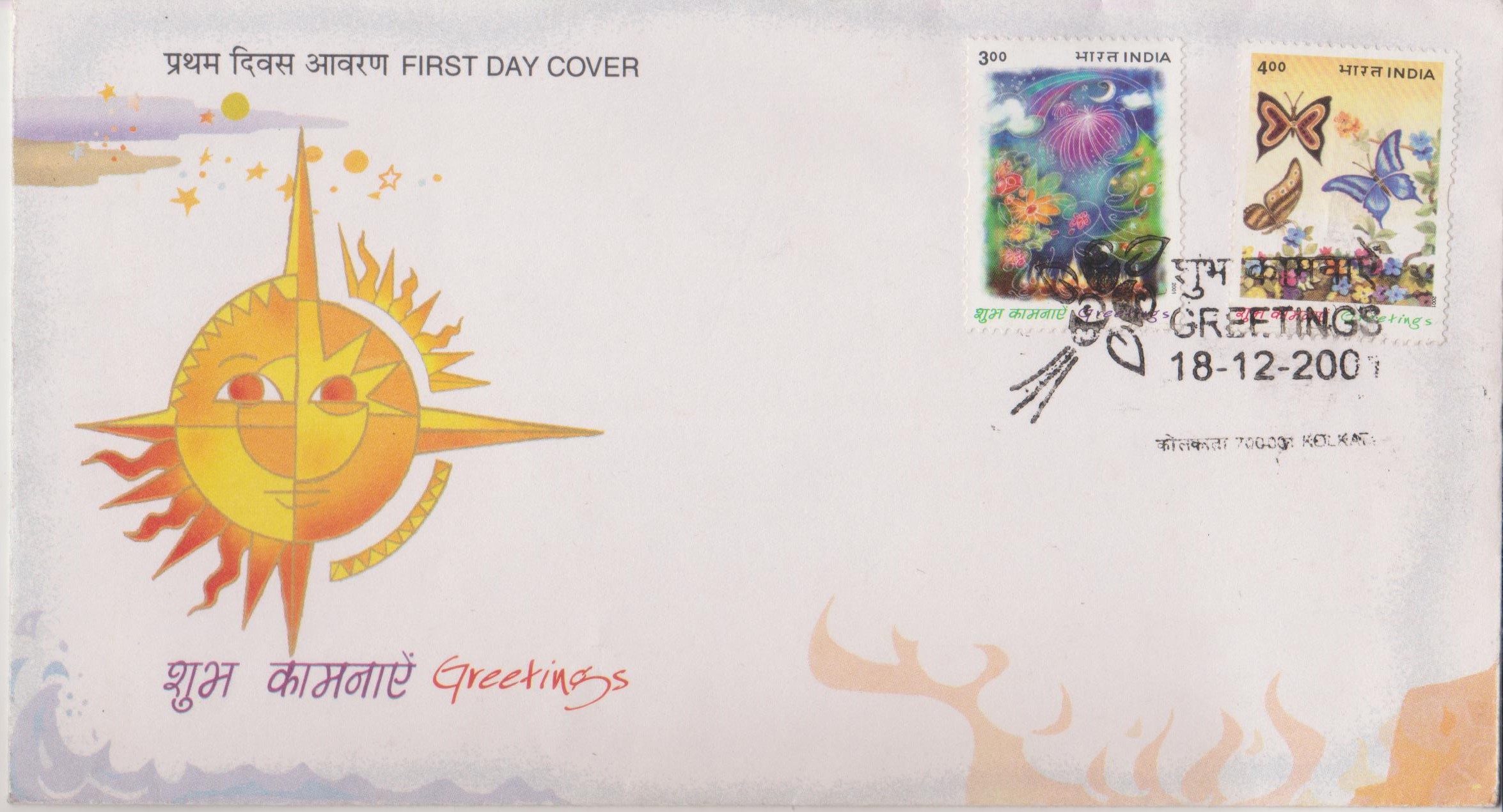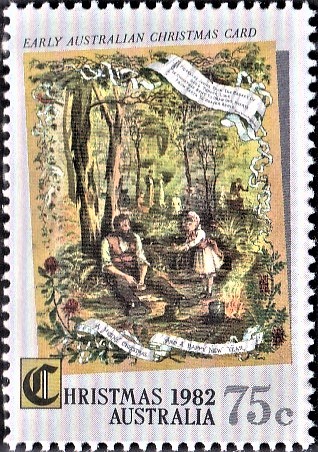
India Greetings 2003
Complete Set of 4 nos of postage stamps on the Greetings :





 Issued by India
Issued by India
Issued on Oct 30, 2003
Issued for : The Department of Posts joins in the festive season by bringing out a set of four special stamps on the theme of Greetings. Happy Celebrations!
Credits :
Stamp and FDC : Kamleshwar Singh
Cancellation : Alka Sharma
Type : Se–tenant strip of 4 Stamps, Mint condition
Colour : Four
Denomination : 400, 400, 500 & 500 Paise
Overall size : 2.90 x 2.90 Cms.
Printing size : 2.90 x 2.90 Cms.
Perforation : 13.5 x 13.5
Paper : Matt Chromo
Print Quantity : 0.8 Million each
Number of Stamps per sheet : 40
Printing Process : Photo Offset
Printer : Calcutta Security Printers Ltd.
About :
- The human species is an evolutionary marvel. Occupying the topmost rung of the evolutionary ladder, it is bequeathed with amazing qualities of head and heart. The development of the brain, especially the forebrain is primarily responsible for these capacities, not only intellectual but also emotional even though the heart is commonly symbolized as the seat of emotion. As the infant sets sail on the journey of life, his emotional repertoire is extremely small but as a consequence of growth and development, it widens and differentiates. Among the most pristine emotions, however, is happiness. Its experience is ethereal and its expression assumes countless hues, each hue unique, liberating the mind and lending vibrance to the spirit. Sample the mirthful farmer who breaks into a dance at the sight of a rich harvest, the revelry of a victorious army, the merriment of a winning cricket team, the euphoric “Eureka!” of Archimedes; each situation is a colourful portraiture of happiness. Another expression of happiness is through the exchange of greetings at festivals or other occasions and has been practised since time immemorial.
- History has recorded the prevalence of greetings from ancient times. The expression of seasonal greetings in Rome was marked by exchange of Roman Lamps impressed with the figures of victory surrounded by strenae inscribed “Anno novo faustum felix tibi sit” (May the new year be happy and lucky for you). Even in ancient Egypt, New Year was celebrated through exchange of symbolic presents such as scent bottles and scarabs inscribed, “Au ab nab” (All goodluck). The practice of sending acknowledgements for the New Year continues in Europe through the early days of Christianity. With the advent of printing press and its commercial use by the 18th and 19th centuries, the exchange of New Year cards and calendars by merchants and tradesmen became common. The introduction of penny postage and envelopes in 1840 provided a convenient transmission medium and the exchange of greeting cards became a routine feature. The modern day greeting cards crystallized in 1843 when the first Xmas card with season’s greetings was designed in UK. The commercial production of greeting cards became fully established by the 1860s.
- In India we send greetings on festivals like Deepawali, Baishakhi, Dussehra, Pongal, Christmas, Bihu and Id, besides other personal occasions to express a variety of emotions such as love, sympathy, friendship, gratitude and congratulations. The post remains the most popular and predominant mode of transmission of the cards and letters containing these messages of greetings. And to add value to the message, Greetings stamps introduced & issued from time to time by the Department of Posts since 1990, carry out the role of harbingers of glad tidings. By embellishing the envelope itself these stamps make the message inside more meaningful and convey to the recipient the extra effort and care that have gone in to send the message. It is an established fact that the visual image leaves a more lasting imprint than the printed word; it contributes to a broader view that opens new vistas of perception. The greetings stamps do precisely that; they add an extra dimension to the thought expressed, reinforcing the spirit of the message and making it more eloquent.
Subscribe
Login
0 Comments


